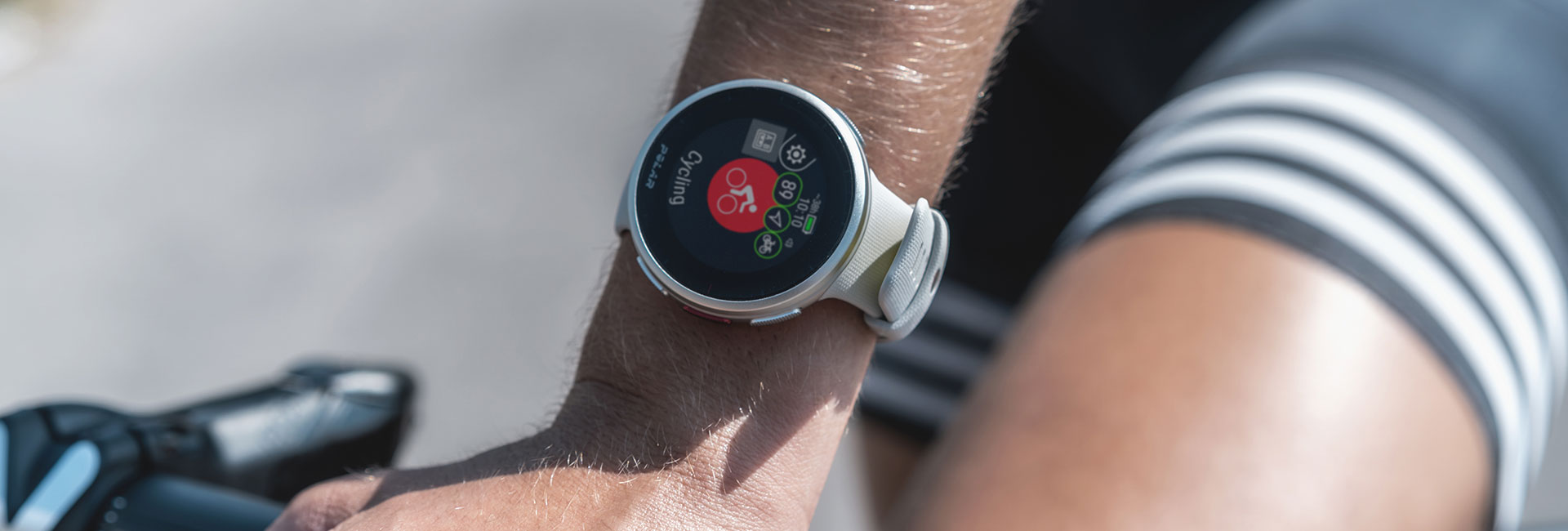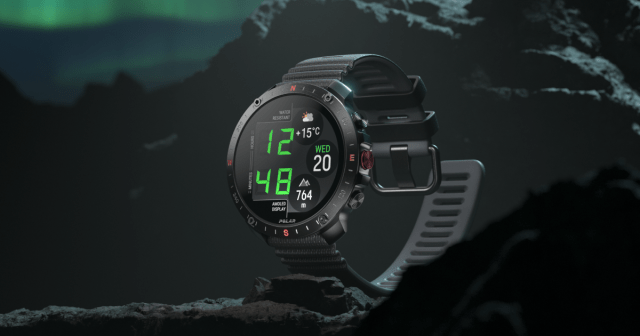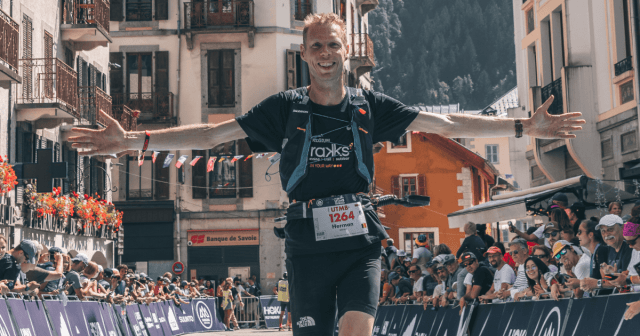Want to understand the impact your training has? It turns out you don’t need to be a professional athlete to gain the essential insights that testing provides. By regularly tracking your progress with these easy-to-use Polar Vantage V2 tests, you can maximize your training and recovery by accessing the data you need.
And the best part? Your Vantage V2 does all the hard work for you – tracking and calculating your performance, so all you need to do is pay attention to the results.
Here’s your guide to the range of Polar Vantage V2 tests – the how, when, and why for each one.
RUNNING PERFORMANCE TEST
Polar’s Running Performance Test provides a convenient, reproducible, and cost-effective way to follow your running progress. Use this test as a means of tracking your improvements in running performance and determine your training zones – heart rate, speed, and power. All you need is a track and a pair of running shoes!
How does the Running Performance Test work?
Simply put, you follow a target speed that increases gradually throughout the test.
Running Performance Test is a great companion for Running Power. When your speed and power zones are set correctly, you will be well-advised to complete diverse training sessions, ranging from endurance runs to high-intensity and speed interval training.
Jussi Peltonen, Senior Researcher at Polar
The initial target speed is set to 6 km/h (10 min/km), a walking pace for most people, to allow runners of all abilities to take the test. Advanced runners may increase this initial speed up to 15 km/h (4 min/km) in the test settings.
The rate of change for the target speed remains constant throughout the test – 1 km/h (60 min/km) for every 100 seconds – no matter what speed you begin with.
The test can be finished when 85% of your Maximum Heart Rate (HRmax) has been achieved and 6 minutes have elapsed. To give you a practical example: if your HRmax is 193 BPM, you’ll be able to finish the sub-maximal test when reaching 164 BPM.
However, you can continue the test until exhaustion to determine your running performance with the highest possible accuracy and update your HRmax.
How do I take the running test?
Watch this video for a step-by-step guide to setting up and taking Polar’s Running Performance Test.
Does the Vantage V2 guide me during the running test?
The Running Performance Test is a speed-guided test, which means that you must follow the target speed as precisely as possible. To keep the right pace, Polar Vantage V2 has a speedometer as a visible aid, and vibration/audio signals warn you whether you are going too fast or slow.
A weak signal is given when the current and target speed difference is more than ±1 km/h (60 min/km). If the difference exceeds ±2 km/h (30 min/km), a stronger signal follows this.
If your speed varies more than ± 3 km/h (20 min/km), the test is automatically aborted unless the target speed is restored within 10 seconds.
Where should I perform the Running Performance Test?
We recommend that you select a flat route, such as a running track, as it is assumed that your effort increases in parallel with speed throughout the test.
Moreover, a running track or a treadmill will give you the optimal running ground as you do not have to stop for traffic lights or other obstacles that might be the case when doing normal road running.
We recommend you avoid heavy exertion 1-2 days before the test and follow your regular eating and sleeping routines to ensure optimal preparation.
Can I do this test on a treadmill?
The Running Performance Test can be done on a treadmill using a stride sensor or a power meter (such as the ones by Stryd).
Should I perform a maximal or submaximal test?
If you don’t know your HRmax yet, we recommend doing the maximal test. Also, if you’re willing to get as accurate personal heart rate, speed, and power zones as possible, the maximal test is the one to go with.
Please bear in mind that the maximal test load is considerably heavier than the submaximal test (85% of your HRmax).
How often should I do the Running Performance Test?
We recommend doing one maximal test per quarter to ensure that your training zones are always up-to-date on your Vantage V2.
CYCLING Performance TEST
Polar’s Cycling Performance Test is a simple and effective way to track your cycling performance improvements and determine your power zones.
Moreover, the Cycling Performance Test is based on a commonly used FTP (Functional Threshold Power) test for cycling. The purpose of the FTP test is to assess a cyclist’s highest possible power (watts) from a substantial ride.
What equipment do I need for this test?
To reliably evaluate the effectiveness of your training, it’s important to obtain information about performance under standardized tests. Cycling Performance Test is based on the Functional Threshold Power test, which is widely used by professional cyclists to assess aerobic performance.
Jussi Peltonen, Senior Researcher at Polar
For the Cycling Test, you’ll need a third-party power that is compatible with Polar. We also recommend performing this test either on a bike trainer or on a bike track/velodrome to avoid obstacles like road traffic and traffic lights.
Do I need to cycle for 60 minutes to do this test?
No, the Cycling Performance Test can be also done in 20, 30, or 40 minutes.
How do I take the Cycling Test?
Watch this video for a step-by-step guide to setting up and taking Polar’s Cycling Test.
How often should I do the cycling test?
We recommend doing the Cycling Performance Test once in two to three months to ensure that your power zones are always up-to-date.
Why does my running VO2max differ from my cycling VO2max?
The difference between cycling and running VO2max is related to how your muscles work during different activities. It is typically easier to activate a more significant amount of muscle mass in running than in cycling, therefore achieving higher VO2max.
LEG RECOVERY TEST
The Leg Recovery Test provides you with feedback on your muscle recovery and readiness for speed and strength training. It helps you to see how your leg muscles have recovered from training and how your explosive strength is developing.
Moreover, the test can be done without any external sensor making it very convenient to perform basically anywhere at any time.
How often can I perform the test?
Leg Recovery Test is ready when you are. The ability to evaluate leg performance before each training is an important asset because your muscle power is affected by many factors, such as muscle energy content and neural drive to muscles. The best athletes align their key training sessions with peaks in muscle power.
Jussi Peltonen, Senior Researcher at Polar
The Leg Recovery Test can be performed as often as you want, but in order to get results, you need to build a baseline. This means that you need to perform the test three times within 28 days.
What do I need to do to perform the Leg Recovery Test?
The Leg Recovery Test is straightforward to perform and takes under a minute to complete. You just need to stand up with your back and legs straight and your hands on your hips.
Polar Vantage V2 will signal you with a sound when you start the test. Then, every time you hear the beep, squat down rapidly, jump straight up and come down on legs straight.
You will hear the signal three times; therefore three jumps are needed. Keep your hands on your hips all the time while performing the test.
Watch this video for a step-by-step guide to setting up and taking Polar’s Leg Recovery Test.
Fitness Test gives a reasonable estimate of your aerobic fitness level (VO2max) without breaking a sweat. Fitness Test is a good starting point for someone who has zero experience of testing. Progress from Fitness Test to Leg Performance Test and finally to Running or Cycling Performance Test depending on your needs.
Jussi Peltonen, Senior Researcher at Polar
Fitness test
Polar’s Fitness Test is designed as an easy way to estimate your V02max and track your current fitness level. Available on most Polar sports watches, this is probably one of the most accessible tests you’ll ever take – all you need to do is relax! Read this guide for more information and tips about this test.
Orthostatic test
Polar’s Orthostatic Test measures your heart rate variability (HRV) as a way of calculating the correct balance between your training and recovery. Using a Polar H10 chest strap along with one of the Vantage sports watches or M460 GPS cycling computer, you can see if you’re training enough or too much. Check out this guide for more information about how to use this test to improve your training.
If you liked this post, don’t forget to share so that others can find it, too.
Or give it a thumbs up!
I like this article
Please note that the information provided in the Polar Blog articles cannot replace individual advice from health professionals. Please consult your physician before starting a new fitness program.





